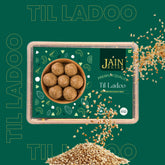JBT20 - Shree Munisuvrat Bhagwan - The Twentieth Tirthankara

Shree Munisuvrat Bhagwan - The Twentieth Tirthankara
Shree Munisuvrat Bhagwan is the 20th Tirthankara of the present Avasarpini Kaal in Jainism. Born to King Sumitra and Queen Padmavati in Rajgriha (modern-day Rajgir, Bihar), he lived for over 30,000 years, attained Kevalgyan (omniscience) after long penances, and achieved Moksha at Sammed Shikharji. His symbol is the tortoise, representing patience, endurance, and spiritual stability, while his complexion is described as blackish-blue.
Birth and Early Life of Shree Munisuvrat Bhagwan
-
Born into the Ikshvaku dynasty in Rajgriha.
-
Parents: King Sumitra and Queen Padmavati.
-
Born in the dark half of Jyeshtha month under Pushya Nakshatra.
-
Complexion: Blackish-blue.
-
Symbol: Tortoise (Kachhua), symbolizing patience, strength, and spiritual steadiness.
- His name, Munisuvrat, reflects his vow to live like an ascetic (Muni).
Past Life of Shree Munisuvrat Bhagwan
-
In his previous life, his soul existed as King Surshreshta of Champa.
-
He lived piously, embraced asceticism, and performed severe penances.
- After death, he was reborn in the Pranat dimension of gods, before descending into the womb of Queen Padmavati to be born as a Tirthankara.
Diksha and Renunciation
-
At the age of 30,000 years, he renounced his royal life under the Pushya Nakshatra.
-
On the day of renunciation, 56 kings and countless followers also took Diksha with him.
- Practiced severe austerities for 11,000 years, remaining detached from material desires.
Kevalgyan and Preaching
-
After 11,000 years of meditation, he attained Kevalgyan (omniscience).
-
His chief apostle (Ganadhara) was Sage Malli Swami.
- He spread the message of Ahimsa, Satya, Dharma, and renunciation, guiding countless souls toward liberation.
Teachings of Shree Munisuvrat Bhagwan
-
Ahimsa (Non-Violence): Never harm any living being.
-
Truthfulness & Simplicity: Live with honesty in thought, word, and action.
-
Detachment from Materialism: Desires and possessions bind the soul.
- Penance and Meditation: The true path to self-realization and Moksha.
Hidden & Lesser-Known Facts of Shree Munisuvrat Bhagwan
-
Protected by Lord Krishna – Jain texts state Lord Krishna worshipped him and built a temple in his honor.
-
Connection with Ramayana – Events of the Jain Ramayana are placed during his lifetime.
-
Associated with Ravan – Some Jain scriptures mention that Ravan was a devotee of Munisuvrat Bhagwan and built temples for him.
-
Influence on Buddhism – Historians suggest Buddhist non-violence was inspired by his teachings.
- Guardian Tirthankara – Many Jains believe he acts as a spiritual protector, blessing devotees with wisdom and strength.
Nirvana and Legacy
-
Attained Moksha (liberation) at Sammed Shikharji, the holiest Jain pilgrimage site.
- His legacy emphasizes patience (like his tortoise symbol), non-violence, and detachment from worldly desires.
Questions & Answers on Shree Munisuvrat Bhagwan
Q1. What is the significance of his symbol?
👉 His symbol is the tortoise (Kachhua), representing patience, endurance, and stability.
Q2. When did Shree Munisuvrat Bhagwan take Diksha (renunciation)?
👉 He renounced at the age of 30,000 years under the Pushya Nakshatra.
Q3. How long did he meditate before attaining Kevalgyan?
👉 He meditated for 11,000 years before attaining omniscience.
Q4. How is he worshipped today?
👉 Jains perform Puja, Abhishek, and Stuti in his temples. His mantras are recited for spiritual protection and inner peace.

































